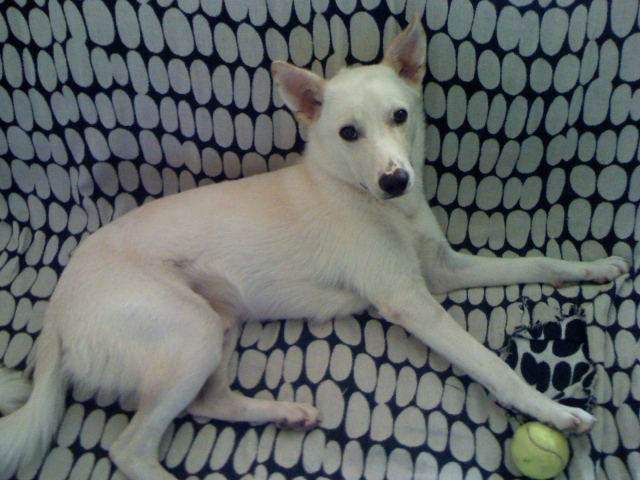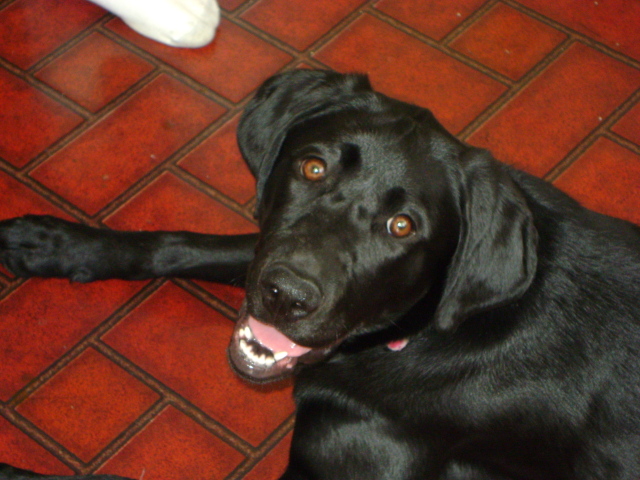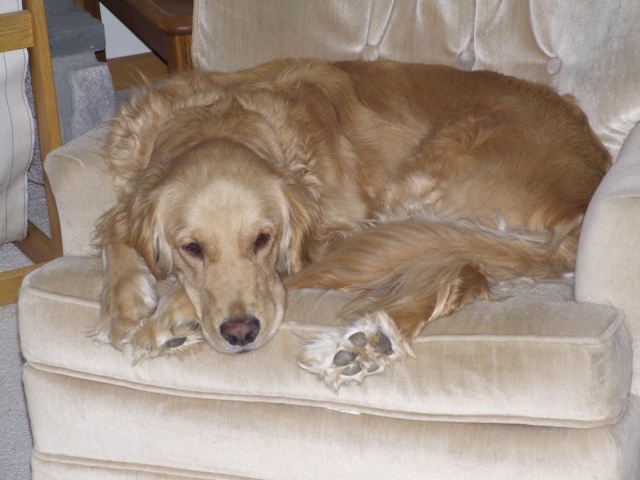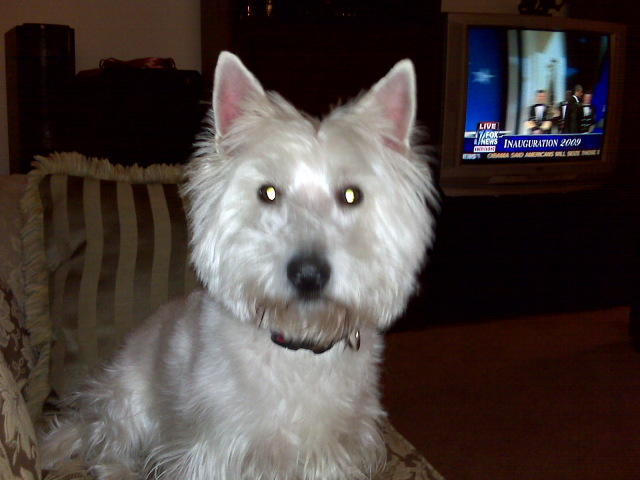QuestionQUESTION: My 6 month old sheltie named Scamp is a wonderful dog, but goes crazy in car. I don't know if he is scared or herding sinks in. He barks like crazy(and unlike most shelties he does not bark much outside of riding in the car.) He jumps around. He seems as if he is in a different state of mind. He even gets a litlle aggressive. I tried putting him in a crate. He still goes crazy and bangs all over in hte crate. He has training classes coming up and grooming appt. and I am not looking forward to the ride. When we get to our destination he won't get out of the crate and becomes nippy. Once we get home and get inside he is a different dog. Back to our sweet Scamp. We would take him more places but it exhaust us. We go on 2 walks a day and he gets plenty of exercise. Help!! Thanks DeAnna
ANSWER: Your dog appears to be overstimulated by the (possibly) moving objects involved when driving. He might also be demonstrating some low level neurological problem caused by movement. He must be crated when in the car. However, there's a simple solution to his aggression when you open the crate. Put a lightweight leash (not his normal walking lead) on him when you crate him; pass the leash through the door of the crate, the crate should still easily close, and leave it extended so that you can grasp the handle of the leash before you open the crate. COVER the crate. Do NOT talk to the dog, mention his name or in any way interact with him, even if he is barking and carrying on in the crate. So long as the crate contains him, he is safe and cannot harm himself. By covering the crate, you will be eliminating visual stimuli. When you open the crate door, you will have the other end of the leash in your hand. Give him 30 to 60 seconds to calm down, then attach his normal lead and remove the travel lead. Be sure he has not chewed through the travel lead before opening the crate; if he has, buy a very lightweight chain leash and use it in the same manner.
There are methods to reduce the dog's anxiety and over stimulation, but they take a great deal of time and this dog doesn't appear to be a candidate. Eventually, since you are withdrawing all reward (your attention, whether negative or positive), his reaction might lessen. If the visual stimuli are precipitating this (behavioral or neurological), covering the crate should eventually help enormously. At first, he will respond as usual because he is working off a condition response. Give it time.
Taking a dog places in the car when the car ride makes the dog crazy isn't a reward, it's an ordeal. Stop feeling guilty for leaving him home.
---------- FOLLOW-UP ----------
QUESTION: You mentioned there are ways to help with anxiety, but you felt he wasn't a candidate. Why? and what is the method. Thanks for all your help.
AnswerShelties are prone to low level (and sometimes grand mal) seizure disorders; there's a possibility you're seeing this although without witnessing the behavior myself I can't be certain. Inhibiting any stimuli which might set him off (whether or not this is physiological) is of utmost importance if you're set on taking him on car rides (which appear not to be negotiable given his grooming and training schedules.) If you want to attempt to rehabilitate this behavior, you need an expert to evaluate the dog's reactions, his overall temperament, other behaviors he demonstrates at home, etc. This is not something a DOG TRAINER can (OR SHOULD) do; you will need to find a Ph.D. or DVM animal behavior expert. The dog has to be very, very slowly desensitized to car rides and this might involve a totally new introduction to the car, something I can't teach you in this venue; nor can I put this dog on any sort of behavior modification regimen without being able to SEE his behavior and conduct tests to assess his cognitive function. I suggest you use the techniques I gave you, especially covering the crate AND the lighweight travel leash (in order to avoid aggressive response, if any.) The dog might respond to the covered crate, if his conditioned response to car rides hasn't gone over the top.

 Dog walking problems
Question
Snickers
I have been trying to train my dog SN
Dog walking problems
Question
Snickers
I have been trying to train my dog SN
 Black lab - 1 yr
QuestionSheba
QUESTION: My lab loves to bite her
Black lab - 1 yr
QuestionSheba
QUESTION: My lab loves to bite her
 aggression in aging dog
Question
Niko
I have a thirteen year old, female, Samoy
aggression in aging dog
Question
Niko
I have a thirteen year old, female, Samoy
 Post bladder surgery potty training for INDOORS!
QuestionTiki
QUESTION: Dear Dr. Connor,
My 10 ye
Post bladder surgery potty training for INDOORS!
QuestionTiki
QUESTION: Dear Dr. Connor,
My 10 ye
 Companion for Lonley Westie
Question
Shannon
We have a 5-year-old neutered Westie w
Companion for Lonley Westie
Question
Shannon
We have a 5-year-old neutered Westie w